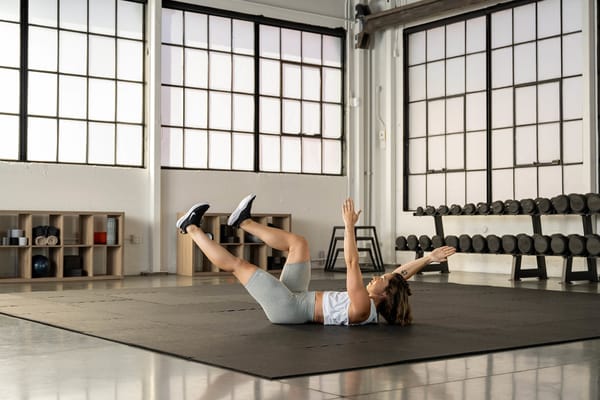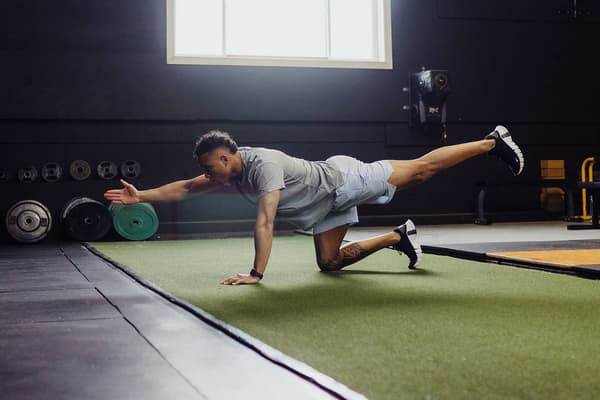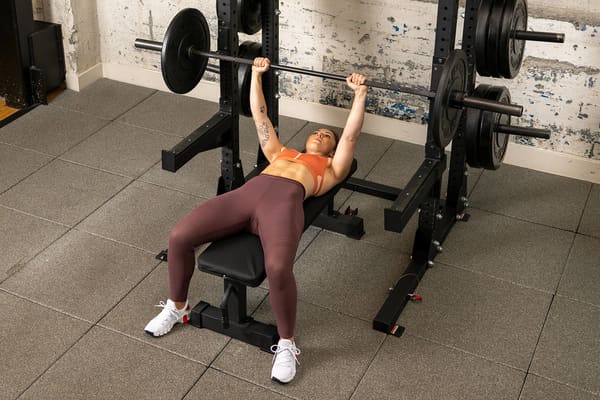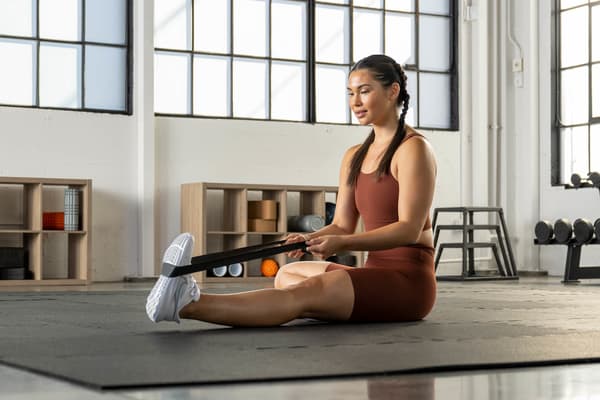Your Guide to Side Lunges: Benefits, Technique and Variations to Try
Sport & Activity
Get ready to work your quads and glutes—all while improving hip mobility.

Lunges are an accessible bodyweight exercise you can do at home to strengthen your legs, and there are plenty of variations you can try. One of the most common variations is side lunges, which allow you to work different angles to standard lunges.
At a basic level, a side lunge will help you expand the areas you target during your lower-body workouts. But trainers swear you can tweak this movement to create an even more dynamic workout to target additional areas of your body.
But if you're not following the proper form, you could risk not reaping all the benefits of this movement or, worse, injury. Here's what you need to know about side lunges, plus new variations to test out during your next workout.
What muscle groups do side lunges target?
Side lunges aren't just a variation on lunges.
"Side lunges are a very important lower-body movement that work multiple muscle groups", said NASM-certified personal trainer and CEO of Power 8, Ocho. "They work your quads, abductors, glutes and hamstrings".
Those are similar muscles that are worked with traditional lunges, just at a different angle and with more stabilisation involved, said Albert Matheny, RD, CSCS,, co-founder of SoHo Strength Lab. Targeting those muscles at a different angle from basic lunges is "ultimately going to make your legs stronger", he said.
Who are side lunges good for?
Side lunges are usually a good exercise for most people. Ocho said the move "is a great exercise to warm up your hips before training, as well as stretching your inner thighs, while improving your overall hip mobility".
The different angles you hit with side lunges are important, because you spend much of your time moving forwards as you walk, run, cycle and just generally go about your day, Matheny said.
"Injuries come from too many repetitive motions", he said. "You walk and run in a straight line, but side lunges have you stretching and moving in a different plane of motion".
Adding this move to your workout routine can ultimately help strengthen all areas of your quads, abductors, glutes and hamstrings, he said.
(Related: The Reason Your Squats Aren't Growing Your Glutes—and How to Fix It)
Should you add weights to side lunges?
You don't necessarily need to add weights to your side lunges, but Ocho calls this "a plus".
"Not only does adding weight make the exercise more advanced, but it also contributes to progressive overload", he said. (Progressive overload is the gradual increase of stress on your muscles and bones with the goal of getting stronger.)
Adding dumbbells or other weights "stresses your muscles more and ultimately makes them stronger", Matheny said. "The only caveat is that this isn't necessarily something where you should try to go as heavy as you can—that's where people go wrong. Using dumbbells or other weights should be more of an accessory or support vs trying to max out your muscles".
What's the proper way to do a side lunge?
Proper form is important to lower your risk of injury, and Ocho breaks down the correct form for side lunges this way:
- Start by standing with your feet flat on the floor, hip-width apart.
- Take a wide step with your left leg to the side. "Your toes on both feet should be pointed in the same direction", Ocho said.
- Bend your left knee as you step outwards and keep your hips back. "It should feel like you are trying to sit just one side of your lower body in a chair", Ocho said.
- Push off from your left foot to return to the starting position.
- Perform one set of side lunges on your left leg, then switch to your right leg.
Matheny recommended keeping your back straight when you're doing standard side lunges.
"A lot of people forget what their upper body is doing", he said. "You don't want to get hunched over—that's not going to help you get stronger in your glutes or hamstrings, and will just put you in a bad postural position".
Matheny also stressed the importance of not stepping too wide with your lunge.
"Some people are six feet tall and some are five foot two. The distance you lunge may not look the same as someone else, and that's fine", he said.
A good way to tell if you're stepping out the right amount? You should feel a slight stretch in your hamstrings and glutes, but not pain or a lot of tension in the area, Matheny said.
How to Incorporate Side Lunges into Your Workouts
Ocho said there's no right or wrong way to incorporate side lunges into your workouts. But he recommended trying to incorporate side lunges into your workouts "at least" two to three times a week, doing eight to 12 reps on each leg.
"Getting more comfortable with the movement is huge", he said. And if you want to add more weight, he suggested lowering the number of reps you do. Matheny said you should see more definition in your muscles within a few weeks.
"Most people get benefits from adding side lunges to their routine a couple of days a week", he said.
4 Side-Lunge Variations to Try
While doing basic side lunges can help work your muscles, adding variations can help target even more areas of your body and ultimately help make you stronger. Consider trying these:
- Slide side lunge. Get a slider and put it under one foot. Then, slide your leg with the slider underneath out straight while bending your opposite knee. Pull your extended leg back in as you straighten your knee and get back to your starting position. Do several reps on each side.
- Side lunge with a runner's jump. Start by standing with your feet together. Step out to the right side and bend your right knee as you go into a side lunge. Pause, then push off from your right leg and straighten back to your starting position. Instead of putting your right foot back on the ground, bring your knee towards your chest and jump up. Land softly on your left foot and start again. After several reps, move to the opposite leg.
- Curtsy lunge. Stand with your feet shoulder-width apart. Step your left foot diagonally behind you while lowering your left knee until it nearly touches the floor. Your right knee should bend at the same time, putting you in a "curtsy" pose. Stand back up, powering through your right knee until you get into a starting position.
Curtsy lunge with a kick. Go through the same motions as a curtsy lunge, but when you straighten back up, kick your left leg out to the side. Then, go into the next rep.
Words by Korin Miller





